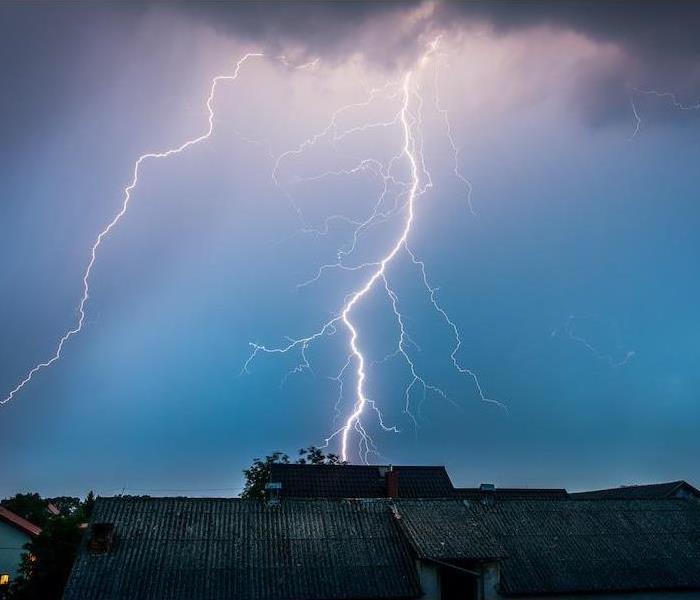Stay Safe When Lightning Strikes
7/10/2023 (Permalink)
 If your home has been damaged by a storm, contact SERVPRO of Stone Mountain/ Clarkston 24/7 to get the recovery process started.
If your home has been damaged by a storm, contact SERVPRO of Stone Mountain/ Clarkston 24/7 to get the recovery process started.
While lighting striking your home may seem like a rare phenomenon, it’s way more common than you’d think. Each year, one in 200 homes is struck by lightning, and there are around 20 lightning-related fatalities annually in the United States.
Knowing what to do and where to go during storms is the best way to protect yourself from this hazard that is created by severe weather. Lightning can not only be a danger to humans but to homes as well. While the path of lightning is unpredictable, knowing the facts can help you best avoid these unexpected bolts from the blue.
The Facts About Lightning
Lightning is a strong sudden burst of electricity, which can travel at about 220,000,000 mph!
Lighting is usually produced during thunderstorms and is more likely to develop during the spring and summer seasons.
While lightning can touch down near or inside your home and create flames, it doesn’t have to strike your home to damage it. When lighting strikes items near your home such as concrete or your gutters, it can surge your home’s electrical system.
A direct hit can also cause damage to electrical and non-electrical items inside your property or severely damage your home’s foundation, chimney and roof.
Here’s how to protect yourself and your home:
Safeguard your home. The simplest way to protect the inside of your home from lighting is by unplugging all electronics before a storm or as soon as you hear a clap of thunder. Lightning is capable of ruining phones, computers and even that fancy new television you just bought.
There are other effective ways to defend your property, but they may be more costly. Of course, approaches such as installing lightning rods on your roof, grounding your home and investing in surge protectors to protect electronics are still beneficial. These precautions could significantly reduce your risk of exterior property damage from lightning.
Know where to shelter. A safe shelter is essential for avoiding lightning. Seek shelter in an enclosed building or a car with a hard-topped roof. If you happen to be outside during a storm and you are unable to seek shelter indoors, avoid bodies of water and shelter near lower trees.
The best way to know when it’s safe to leave your shelter is by listening for thunder. Wait about 30 minutes after hearing a clap of thunder before returning outside.
Unplug your stuff. As stated above, it’s crucial to unplug any electric devices before a storm touches down in your area. If lightning were to strike a nearby electrical pole, it could lead to an electrical surge and completely fry any plugged-in devices.
Making sure to do this ahead of storms is crucial because unplugging equipment during storms puts you at risk of being electrocuted. Staying weather-aware can help you know when it’s time to unplug any devices and seek appropriate shelter.
If your home is impacted by any weather hazards like lightning, our professionals at SERVPRO can be on the scene fast. We have years of experience restoring storm-damaged homes to their preloss state.



 24/7 Emergency Service
24/7 Emergency Service